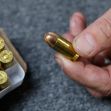Sitting en banc, the Ninth Circuit Court of Appeals upheld an amendment to a California law that prohibits possession of gun magazines that can hold more than ten rounds of ammunition. Allowing some exemptions, the court, in an often feisty written debate, voted 7-4 along party lines to uphold the constitutionality of the large-magazine ban.
The opinion was written by Circuit Judge Susan P. Graber, with concurrences by herself, Circuit Judge Marsha S. Berzon, joined by Chief Judge Sidney R. Thomas and Judges Richard A. Paez, Mary H. Murguia, Paul J. Watford, and Andrew D. Hurwitz on November 30.
In the majority opinion, the judges reversed the district court’s 2019 summary judgment and the injunction that prohibited the state from enforcing the magazine-limitation law. The district court’s actions were based on the belief that plaintiffs were likely to succeed on their claims. The Ninth Circuit opinion remanded the case for entry of a judgment in favor of the California State Attorney General.
Circuit Judge Patrick J. Bumatay wrote a dissenting opinion that was joined by Judges Sandra S. Ikuta and Ryan D. Nelson. Lawrence VanDyke wrote a separate dissent that was criticized for its tone by several of the judges in the majority. All those appointed by Democratic presidents were in the majority, while the four dissenters were appointed by Republican presidents.
The case stems from the passage of Senate Bill 1446, which amended California Penal Code section 32310 in 2016 when voters approved Proposition 63. This section amended the California Penal Code to “prohibit people from acquiring and keeping a firearm magazine that is able to hold more than 10 rounds of ammunition,” according to the California Peace Officers’ Association website. The website explains that possession is an infraction of the law, while acquisition by importing, buying, borrowing, receiving or manufacturing is a misdemeanor or a felony.
Early in her opinion, Judge Graber explained the reason for the magazine limit, stating that a “magazine enables a shooter “to fire repeatedly—a number of times up to the ammunition capacity of the magazine—without reloading.” She described how magazines with capacities of ten rounds or more, believed to be present on half of our country’s guns, enable a shooter to “fire repeatedly…without reloading.” She emphasized that the purpose of the 2016 law was “to make it illegal in California to possess the kinds of military-style ammunition magazines that enable mass killings like those” in Sandy Hook; Aurora, Colorado; and Columbine among others.
Plaintiffs, five individuals and the California Rifle and Pistol Association, Inc. argued that the law violated the Second Amendment, as well as the Due Process Clause of the Fourteenth Amendment, and the Takings Clause of the Fifth Amendment, which prohibits the “taking of private property for public use without just compensation.”
The majority opinion focused on two key questions: did the law affect conduct protected by the Second Amendment and, if it did, what level of scrutiny should be applied. In its opinion, the court noted that ten other circuits have adopted a similar, two-step analysis. The court found that the law does “implicate” the Second Amendment, and then decided to apply intermediate, rather than strict scrutiny due to the “minimal burden on the (law’s) constitutional right to bear arms.” She gave several examples of the minimal burden imposed by the law and emphasized that the law is not a firearm ban at all.
Turning to Judge Bumatay’s dissent, Graber said his recommendation would “jettison the two-step framework adopted by us and our sister circuits, in favor of a “text, history, and tradition test.” She said his suggested procedure would “disrupt a decade of caselaw (sic) and create a …split with ten of our sister circuits, not because of any recent development in the law, but because of the dissent’s preferred reading of the same Supreme Court cases that we have applied many times.” Judge Burzon’s concurrence also found Bumatay’s “text, history, and tradition approach to be “alluring” but “spurious…(and) ultimately an exercise in wishful thinking.”
The majority’s analysis concluded that the law was a “reasonable fit for the important government interests” of reducing gun violence and saving lives since no weapon was actually banned, there was minimal interference with self-defense, and there was no evidence of an actual need to have larger capacity magazines. The court noted that three-quarters of America’s gun massacres with 10 or more deaths and 100 percent of those with 20 or more deaths involved large-capacity magazines. The law, wrote Barber, “reasonably supports California’s effort to reduce the devastating damage wrought by mass shootings.”
Graber’s opinion also noted that the law allows those who currently own guns with the now-outlawed magazine capacity to modify them so they can comply with Penal Code 32310. Owners may also sell their too-large ammunition magazine guns to firearms dealers or those outside of California. Active or retired law enforcement personnel, armored-vehicle security guards, and holders of special weapons permits are also exempt. All these exceptions support the majority’s opinion that the law was not a “taking” and did not violate due process.
She also noted that eight states and the District of Columbia have laws that parallel California’s. Also, she wrote that plaintiff’s arguments conflict with decisions rendered by all six of California’s circuit courts that have already rejected Second Amendment challenges to similar laws.
Judge Bumatay, a Trump appointee, wrote a 63-page dissent that began with a quote from the late Supreme Court Justice Louis D. Brandeis who said, “The states are the laboratories of democracy.” He quickly clarified that in his opinion, Brandeis didn’t mean that states can experiment with the People’s rights, and concluded, “But that’s what California does here.” He said that the law should have been struck down during en banc review.
He stressed, “In reality, (the majority’s) tiers-of-scrutiny approach functions as nothing more than a black box used by judges to uphold favored laws and strike down disfavored ones. But that is not our role. While we acknowledge that California asserts a public safety interest, we cannot bend the law to acquiesce to a policy that contravenes the clear decision made by the American people when they ratified the Second Amendment.” He frequently reminds his readers that “The Second Amendment commands that the “right of the people to keep and bear Arms, shall not be infringed.”
In a separate dissent, Circuit Judge VanDyke, another Trump appointee, said his fellow jurists in the majority were “possessed maybe—by a single-minded focus on ensuring that any panel opinions actually enforcing the Second Amendment are quickly reversed.” He also criticized the majority’s “broken balancing approach.” He concluded, “The truth is that what our court calls “intermediate scrutiny” when reviewing Second Amendment cases doesn’t even rise to the level of real rational basis review.”
According to the Los Angeles Times, the four Republicans on the court and a guns rights group said it will ask the Supreme Court to overturn the ruling, and the President of the California Rifle & Pistol Assn. said his group would ask the Ninth Circuit to “put a hold on the decision” while his group seeks Supreme Court review.






